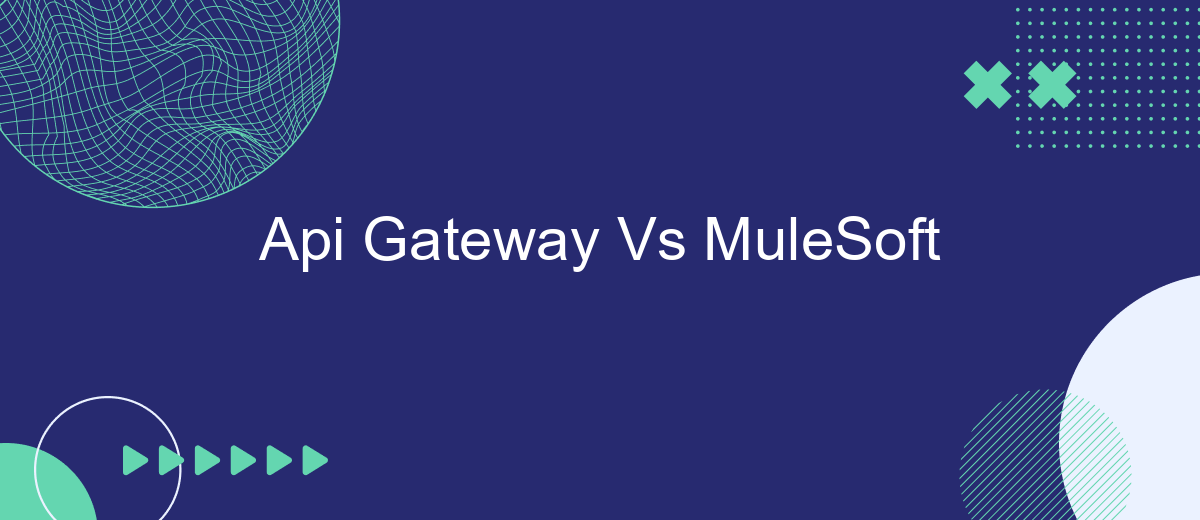In the evolving landscape of digital integration, choosing the right middleware solution is crucial. This article delves into the comparison between API Gateway and MuleSoft, two prominent tools in the integration ecosystem. We'll explore their features, advantages, and use cases to help you make an informed decision for your organization's needs. Discover which solution best aligns with your integration strategy.
Introduction
In today's rapidly evolving digital landscape, businesses are increasingly reliant on robust and scalable integration solutions to streamline their operations. API Gateway and MuleSoft are two prominent technologies that facilitate seamless communication between various services and applications. Understanding their differences and unique capabilities is crucial for organizations aiming to optimize their integration strategies.
- API Gateway: Acts as an entry point for APIs, managing and securing API traffic.
- MuleSoft: Provides a comprehensive integration platform for connecting applications, data, and devices.
- SaveMyLeads: Automates lead processing and integrates with various CRM systems, enhancing business workflows.
Both API Gateway and MuleSoft offer distinct advantages and cater to different integration needs. While API Gateway focuses on API management and security, MuleSoft provides a more extensive integration platform. Services like SaveMyLeads further complement these technologies by automating lead management and ensuring seamless data flow across systems. By leveraging these tools, businesses can achieve greater efficiency and scalability in their integration efforts.
Architecture Overview

API Gateway and MuleSoft represent two distinct approaches to managing and orchestrating APIs within an enterprise architecture. An API Gateway acts as a single entry point for all client requests, routing them to the appropriate backend services. It provides essential functionalities such as load balancing, security, and rate limiting, ensuring that APIs are efficiently managed and protected. On the other hand, MuleSoft offers a more comprehensive integration platform that not only handles API management but also enables seamless connectivity between various applications, data sources, and devices through its Anypoint Platform.
While an API Gateway focuses primarily on the API lifecycle, MuleSoft's architecture extends beyond this to include integration capabilities. This makes it a powerful tool for enterprises looking to streamline their integration processes. For example, services like SaveMyLeads can be easily integrated using MuleSoft, allowing businesses to automate the transfer of leads and other critical data between different platforms. This holistic approach helps organizations achieve greater agility and efficiency in their operations.
Feature Comparison

When comparing API Gateway and MuleSoft, it's essential to evaluate their features to determine which solution best meets your integration needs. Both platforms offer robust tools, but they cater to different aspects of API management and integration.
- API Management: API Gateway excels in managing, securing, and monitoring APIs, providing features like traffic management, rate limiting, and API analytics. MuleSoft, while also offering API management, integrates these capabilities into a broader integration platform.
- Integration Capabilities: MuleSoft stands out with its comprehensive integration platform, allowing seamless connectivity between various applications, data, and devices. Tools like SaveMyLeads can complement MuleSoft by automating integrations, enhancing workflow efficiency.
- Ease of Use: API Gateway is generally easier to set up and use for API management tasks. MuleSoft, on the other hand, requires a steeper learning curve due to its extensive features but offers more flexibility and scalability for complex integrations.
In summary, if your primary focus is on API management with straightforward requirements, API Gateway might be the better choice. However, for more complex integration needs and a comprehensive solution, MuleSoft, especially when paired with tools like SaveMyLeads, can provide a more powerful and flexible platform.
Use Cases and Best Practices

API Gateway and MuleSoft serve distinct purposes in the realm of API management and integration. API Gateway primarily focuses on managing, securing, and monitoring API traffic, making it ideal for scenarios where you need to control access to APIs, enforce policies, and gather analytics. MuleSoft, on the other hand, excels in integrating various systems and services, offering a more comprehensive solution for building and managing complex integrations.
Use cases for API Gateway often include scenarios like securing microservices architectures, enabling API monetization, and ensuring compliance with regulatory standards. MuleSoft is best suited for integrating disparate systems, automating business processes, and enabling real-time data synchronization across multiple platforms.
- API Gateway: Securing APIs, rate limiting, and traffic management.
- MuleSoft: Data integration, workflow automation, and multi-cloud connectivity.
When implementing these solutions, it's crucial to follow best practices. For API Gateways, ensure proper authentication mechanisms are in place and monitor API performance regularly. For MuleSoft, leverage tools like SaveMyLeads to streamline integration processes and reduce manual effort. This approach not only enhances efficiency but also ensures robust and scalable API and integration solutions.
Conclusion
In conclusion, both Api Gateway and MuleSoft offer robust solutions for managing and integrating APIs, but they cater to different needs and use cases. Api Gateway excels in providing a streamlined, secure, and scalable way to manage API traffic, making it ideal for organizations focused on API management and security. On the other hand, MuleSoft provides a comprehensive integration platform that not only handles API management but also facilitates seamless integration across various systems, applications, and services, making it a more holistic solution for enterprises with complex integration needs.
When choosing between Api Gateway and MuleSoft, it is crucial to assess your organization's specific requirements and long-term goals. For businesses that need to integrate various software services quickly and efficiently, tools like SaveMyLeads can be invaluable. SaveMyLeads simplifies the integration process by automating the transfer of leads between different platforms, ensuring that your sales and marketing teams can work more effectively. Ultimately, the right choice will depend on your technical requirements, budget, and the complexity of your integration landscape.


FAQ
What is the primary function of an API Gateway?
How does MuleSoft differ from a traditional API Gateway?
Which is more suitable for microservices architecture, API Gateway or MuleSoft?
Can MuleSoft be used for automating business processes?
Is it possible to use both an API Gateway and MuleSoft together?
Personalized responses to new clients from Facebook/Instagram. Receiving data on new orders in real time. Prompt delivery of information to all employees who are involved in lead processing. All this can be done automatically. With the SaveMyLeads service, you will be able to easily create integrations for Facebook Lead Ads and implement automation. Set up the integration once and let it do the chores every day.
